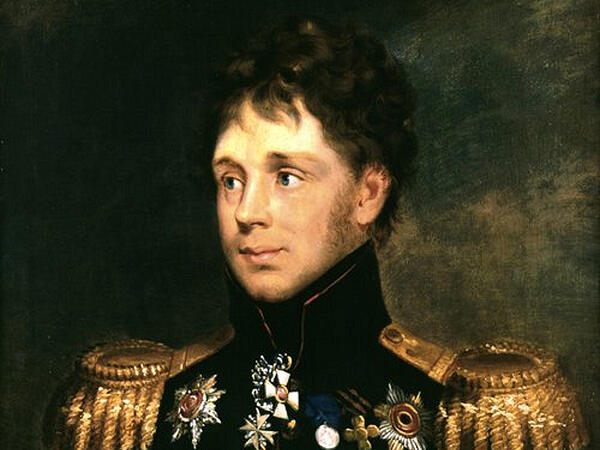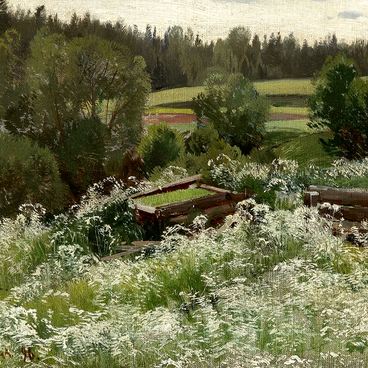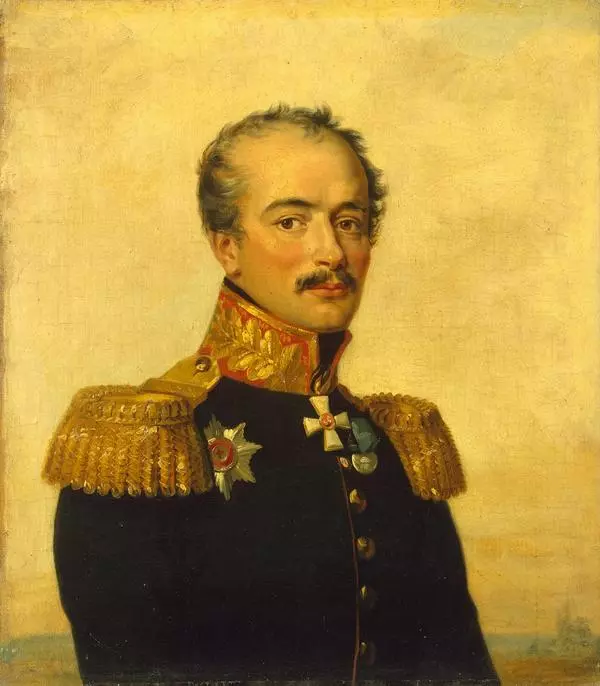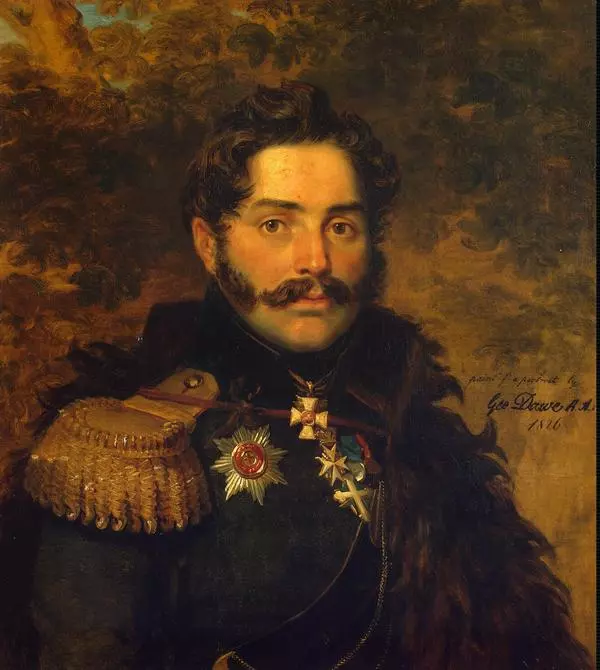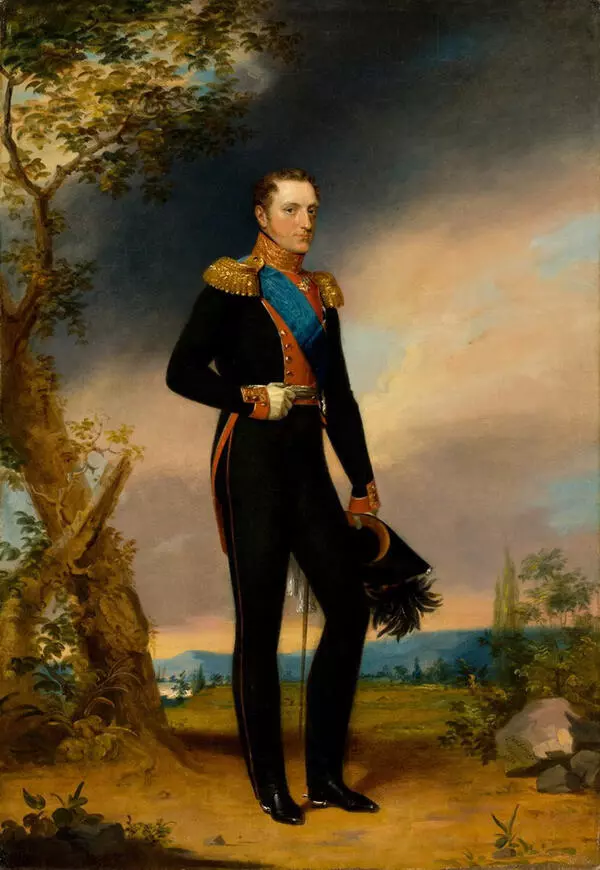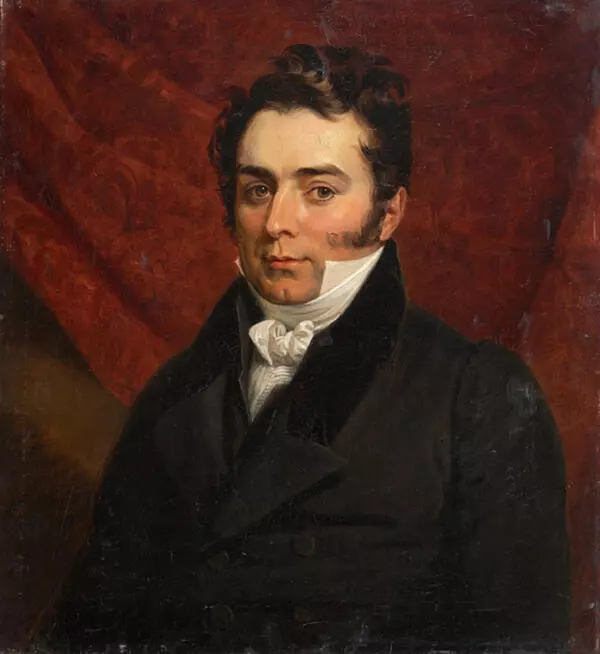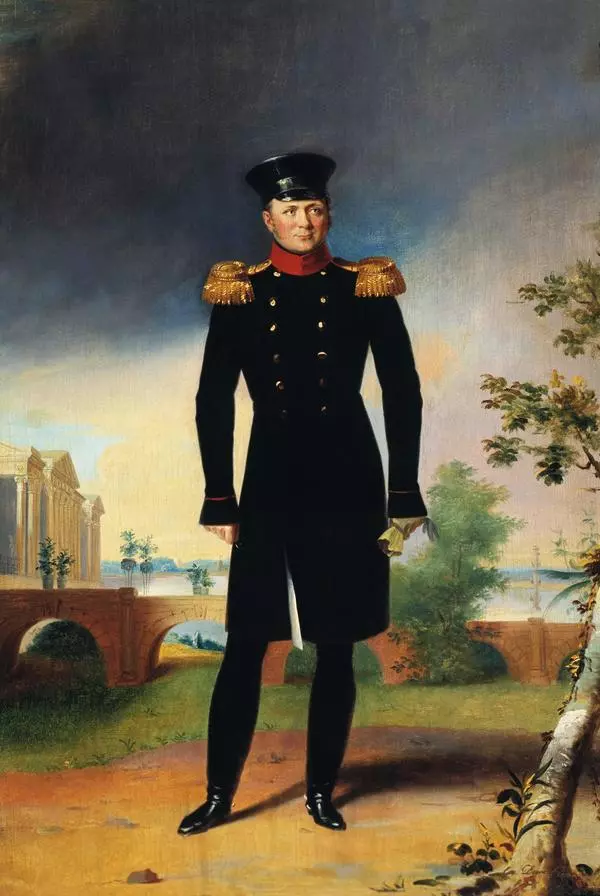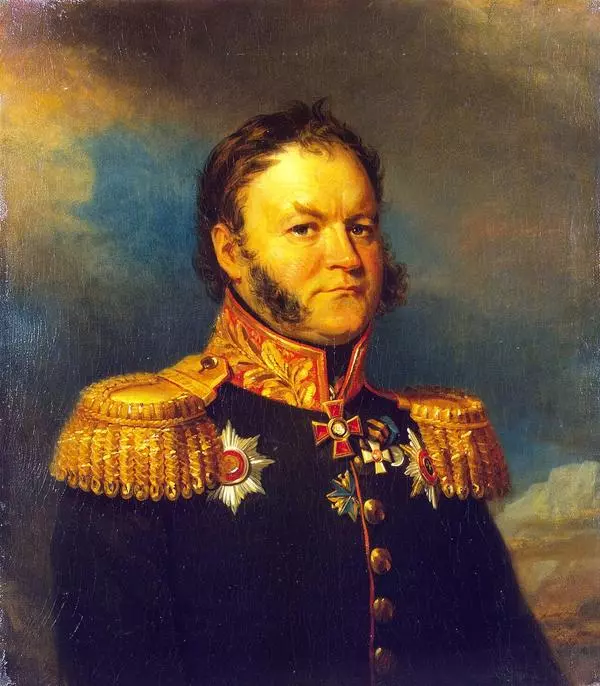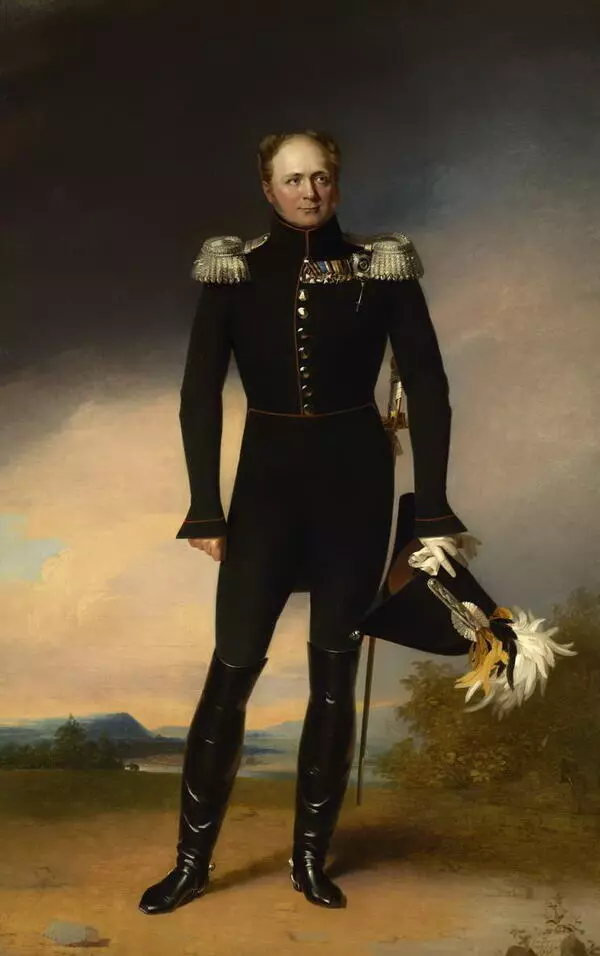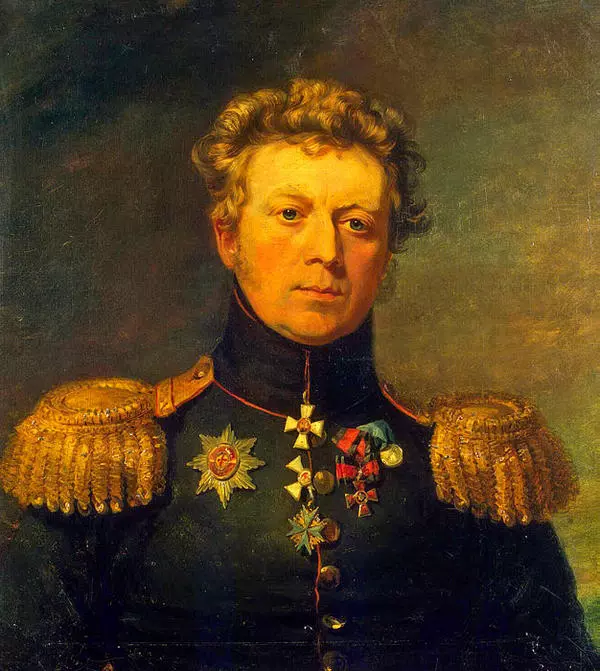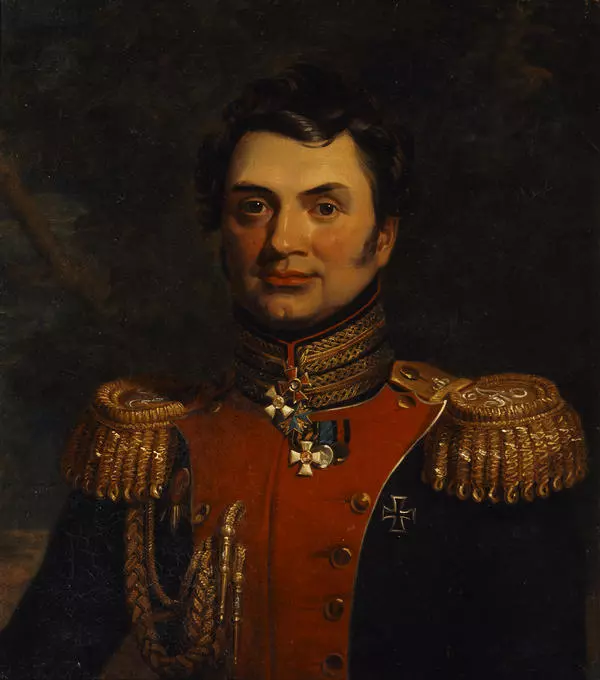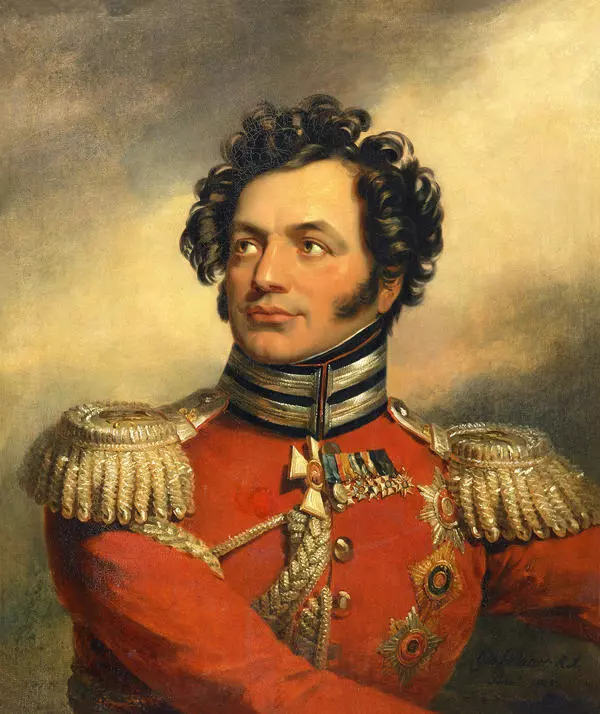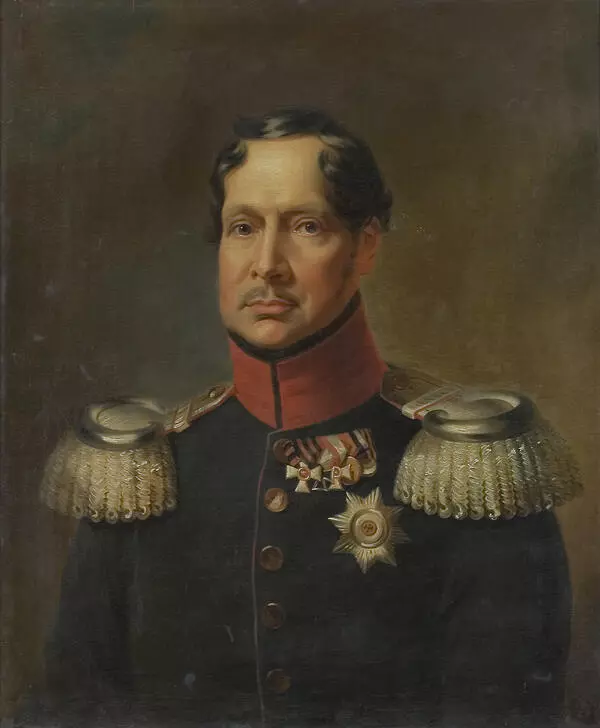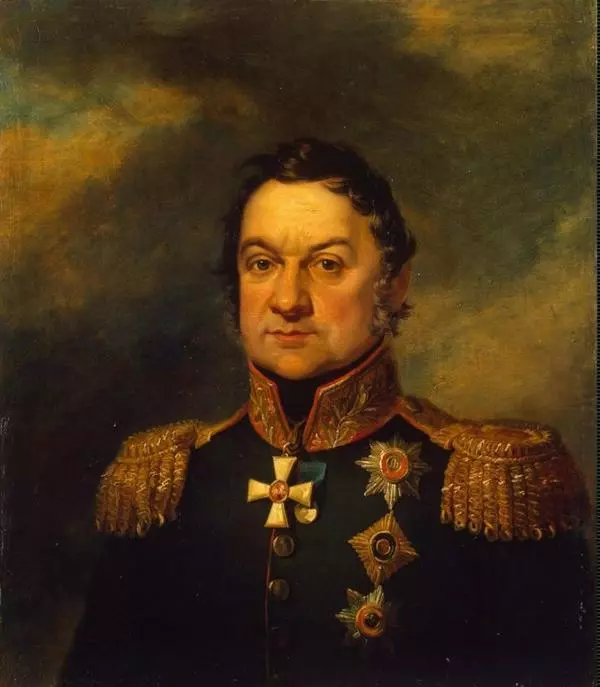The Chelyabinsk State Museum of Fine Arts houses a romantic portrait of the hero of the Patriotic War of 1812, Major General of the Artillery Dmitry Rezvoy. The portrait was painted by the English artist George Dawe.
By 1810, the artist had created paintings on historical and mythological themes, worked as an engraver. In 1814, he was awarded the title of academician, after which he focused on portrait painting. Dawe enjoyed the patronage of the Duke of Kent, it was with his help that he got to the congress of heads of state of the Holy Alliance (the coalition of the monarchist great powers of Austria, Prussia, and Russia in the Napoleonic wars) in Aachen, where he was introduced to the Russian Emperor Alexander I. In 1819, the emperor invited Dawe to the Russian service to work on the Military Gallery of the Winter Palace. The emperor conceived the idea of this collection of portraits following the example of the gallery of Napoleon’s victors in the Waterloo Hall of Windsor Castle.
In 1826, Dawe visited Moscow to paint the coronation portraits of the Emperor Nicholas I and his wife, Empress Alexandra Feodorovna, being awarded the title of “the first portrait painter of the Russian Imperial Court.”
In a chest-length portrait from the museum’s exhibition, Dmitry Rezvoy is painted in a ceremonial uniform. At the time of the creation of the canvas, Rezvoy was already an old man, but Dawe depicted him at the age at which he carried out military campaigns.
Rezvoy had an impressive military career. In 1788, he took part in the storming of Ochakov, in 1789 — in the occupation of Ackerman and Bender, in 1791 — in the capture of Machin. In the Polish campaign of 1794, he took part in the battles at Krupchitsy, Brest, Kobylka. On January 1, 1795, he was awarded the Order of St. George (4th class). According to his contemporaries, Rezvoy was ‘a well-educated and enlightened person gifted with various talents, which is rare.’ At the end of the 18th century, he went with Suvorov to the Swiss campaign, took part in the Patriotic War of 1812. For successful military campaigns, he was awarded a diamond-decorated sword, the nobility status and orders, some of which George Dawe depicted in the portrait.
The descendants of the general, the Vygodskykh, live in Chelyabinsk. They donated to the museum the armchair of Dmitry Rezvoy, created by serf masters in his estate in Marienhof near Vyborg. The family legend has it that when the general was going to war, his wife blessed him by hanging an icon of the Savior on his neck promising to embroider the upholstery for his favorite chair and footstool.
By 1810, the artist had created paintings on historical and mythological themes, worked as an engraver. In 1814, he was awarded the title of academician, after which he focused on portrait painting. Dawe enjoyed the patronage of the Duke of Kent, it was with his help that he got to the congress of heads of state of the Holy Alliance (the coalition of the monarchist great powers of Austria, Prussia, and Russia in the Napoleonic wars) in Aachen, where he was introduced to the Russian Emperor Alexander I. In 1819, the emperor invited Dawe to the Russian service to work on the Military Gallery of the Winter Palace. The emperor conceived the idea of this collection of portraits following the example of the gallery of Napoleon’s victors in the Waterloo Hall of Windsor Castle.
In 1826, Dawe visited Moscow to paint the coronation portraits of the Emperor Nicholas I and his wife, Empress Alexandra Feodorovna, being awarded the title of “the first portrait painter of the Russian Imperial Court.”
In a chest-length portrait from the museum’s exhibition, Dmitry Rezvoy is painted in a ceremonial uniform. At the time of the creation of the canvas, Rezvoy was already an old man, but Dawe depicted him at the age at which he carried out military campaigns.
Rezvoy had an impressive military career. In 1788, he took part in the storming of Ochakov, in 1789 — in the occupation of Ackerman and Bender, in 1791 — in the capture of Machin. In the Polish campaign of 1794, he took part in the battles at Krupchitsy, Brest, Kobylka. On January 1, 1795, he was awarded the Order of St. George (4th class). According to his contemporaries, Rezvoy was ‘a well-educated and enlightened person gifted with various talents, which is rare.’ At the end of the 18th century, he went with Suvorov to the Swiss campaign, took part in the Patriotic War of 1812. For successful military campaigns, he was awarded a diamond-decorated sword, the nobility status and orders, some of which George Dawe depicted in the portrait.
The descendants of the general, the Vygodskykh, live in Chelyabinsk. They donated to the museum the armchair of Dmitry Rezvoy, created by serf masters in his estate in Marienhof near Vyborg. The family legend has it that when the general was going to war, his wife blessed him by hanging an icon of the Savior on his neck promising to embroider the upholstery for his favorite chair and footstool.

